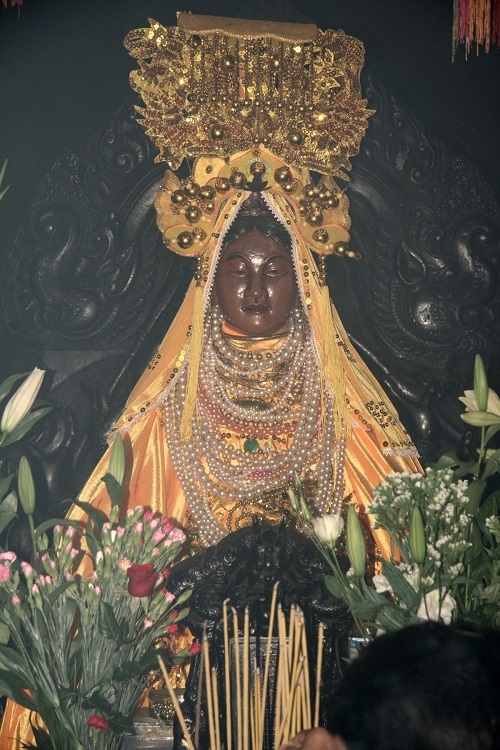Edition: International | Vietnamese
© Copyright 1997 VnExpress.net. All rights reserved.
Situated on Cu Lao hill, next to Cai River in the central coastal town, the temple is a clear reflection of Cham culture. It was built when Hinduism lay at the center of the then Champa Kingdom.
Legend holds that the goddess Yan Po Nagar was sent from heaven to instruct the Champa how to develop agriculture, the kingdom's main foundation. For this contribution, the goddess was profoundly revered by the people of south-central and Central Highland regions.
 |
|
Po Nagar Temple in Nha Trang, Khanh Hoa Province. Photo by Alamy. |
Po Nagar Temple historically consisted of three levels, the lowest entrance level having disappeared. The second level, meant to offer pilgrims a place of rest, now only has two rows of pillars left.
The final level comprises four hollow towers, all facing north, built of mortarless red bricks. Decorations include ornate terracotta statues that portray the goddess Yan Po Nagar, the god Tenexa, fairies, along with deer, golden geese, and lions.
 |
|
Bas-relief of the goddess Durga dancing with two musicians on the main tower. Photo by Alamy. |
The main tower, at 23 meters in height, is dedicated to the goddess Yan Po Nagar, and includes four storeys covered in statues depicting the goddess and animals.
Its interior holds a black granite statue of Yan Po Nagar, formerly sculpted from gold and agarwood, placed atop a giant lotus bud with her back resting against a large bodhi leaf-shaped rock.
Meanwhile, the tower pinnacle is decorated with sculptures showing the supreme god Shiva and many scared animals from Hindu scripture.
The remaining three towers are all dedicated to Shiva, along with his two sons Sanhaka and Ganeca. Surrounding the towers are stone inscriptions commemorating Yan Po Nagar, some listing the offerings made by Champa worshippers.
 |
|
A statue of Yan Po Nagar. Photo by Alamy. |
Po Nagar Temple was recognized by the Ministry of Culture, Sports and Tourism as a national historic site in 1979.
Ponagar Tower Festival, held from 21th to 23th of the third lunar month annually, was also recognized as a national intangible cultural heritage and one of 16 national festivals.